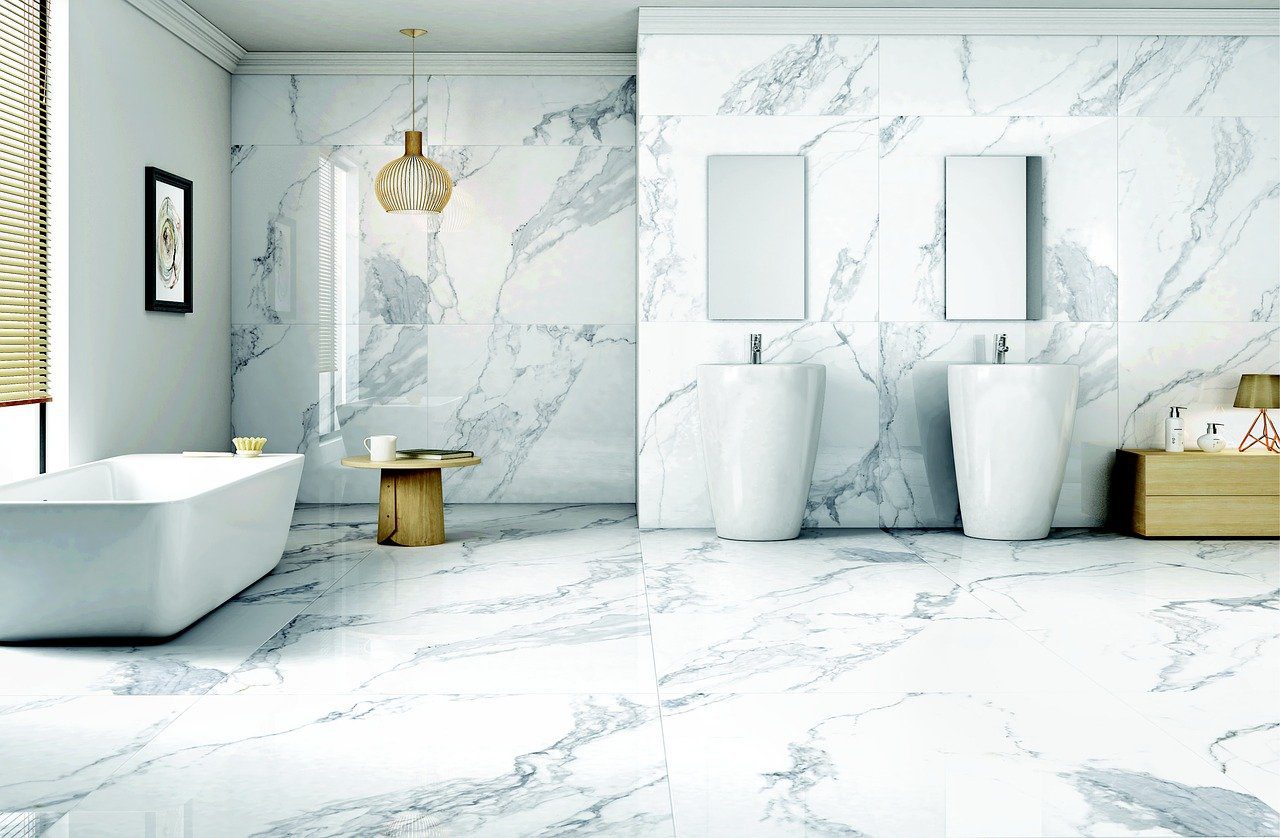Maintain a Marble Floor: Marble floors are synonymous with elegance, sophistication, and timeless beauty. Their luxurious appearance can enhance the aesthetic appeal of any home or commercial space. However, preserving that pristine look requires proper care and maintenance. Marble can quickly become dull, scratched, or stained without the right approach.
This guide will discuss the best practices for maintaining marble floors, the importance of regular cleaning, how to protect your marble from damage, and why crystallization maintenance every six months is crucial to keep your marble floors looking their best.

Understanding Marble Flooring
Before discussing the specifics of maintenance, it’s essential to understand what makes marble unique. Marble is a natural stone formed from limestone through heat and pressure over thousands of years. Its beautiful veining and rich patterns are due to impurities present during its formation, making every piece of marble unique.
However, marble is a porous material, meaning it can absorb liquids and stains if not properly maintained. It is also relatively soft compared to natural stones, making it susceptible to scratches and etching from acidic substances. Understanding these characteristics is crucial for developing an effective maintenance plan.
Daily Maintain a Marble Floor and Cleaning Tips
Maintaining a marble floor begins with consistent daily care. Regular cleaning helps prevent the buildup of dirt, grime, and stains that can damage the surface over time.
Steps for Daily Cleaning:
- Dry Dusting: Use a microfiber mop or a soft, dry cloth to remove dust and debris from the surface. This prevents particles from scratching the marble when walked upon.
- Damp Mopping: If necessary, use a wet mop with clean, warm water. Ensure the mop is only slightly moist, as excessive water can penetrate the marble’s pores.
- pH-Neutral Cleaners: Avoid using acidic or alkaline cleaners, which can damage the stone. Opt for pH-neutral cleaning solutions specifically designed for marble.
- Avoid Abrasive Tools: Never use rough scrubbers, steel wool, or scouring pads on marble surfaces.
- Immediate Stain Removal: Wipe up any spills immediately to prevent staining. Liquids like wine, coffee, juice, and acidic substances like lemon juice can cause permanent damage if left untreated.

Weekly and Monthly Maintain a Marble Floor
While daily cleaning addresses superficial dirt and debris, more thorough cleaning should be performed regularly to maintain the shine and integrity of marble flooring.
Weekly Maintenance:
- Mopping with Marble Cleaner: Dilute a pH-neutral marble cleaner in warm water and mop the floor thoroughly. After mopping, dry the floor with a clean, soft towel.
- Dust Control: Continue dry dusting regularly to prevent particle accumulation.
Monthly Maintenance:
- Deep Cleaning: Perform a deep clean using a specially formulated marble cleaner. This helps remove any buildup that regular cleaning may have missed.
- Re-sealing: Depending on the type of marble and its exposure to foot traffic, re-sealing may be necessary every 3-6 months.
Protecting Your Marble Floor
Preventative measures can go a long way in preserving the beauty of your marble floor. Here are some tips to protect your marble:
- Use Rugs and Mats: Placing rugs or mats at entrances can minimize dirt and grit from being tracked onto the marble.
- Furniture Pads: Attach felt pads to the bottom of furniture legs to avoid scratches and dents.
- Avoid Harsh Chemicals: Never use vinegar, bleach, ammonia, or abrasive cleaners on marble surfaces.
- Maintaining a Stable Environment: Sudden temperature changes or excessive humidity can affect marble. Keeping a stable indoor environment helps protect the stone.
Importance of Crystallization Maintenance
Crystallization enhances the shine and durability of marble floors. This technique involves applying a special chemical solution that interacts with the marble to create a harder, more durable surface.
Why Crystallization Matters:
- Restores Shine: Over time, marble can become dull. Crystallization helps restore its original brilliance.
- Improves Durability: The process strengthens the surface, making it more resistant to scratches and damage.
- Reduces Porosity: By hardening the surface, crystallization reduces the marble’s natural porosity, making it less susceptible to stains.
- Easy Maintenance: The marble becomes easier to clean and maintain after crystallization.
Frequency of Crystallization:
Crystallization maintenance is generally recommended every six months. High-traffic areas may require more frequent treatment to maintain their shine and durability.
Professional Marble Restoration and Maintenance
While homeowners can perform regular cleaning and crystallization, professional marble restoration is sometimes necessary to address deep scratches, stains, or uneven surfaces. Hiring a professional ensures your marble flooring receives the care and expertise it needs.
What to Look for in a Professional:
- Experience: Look for companies with years of experience in marble restoration and maintenance.
- Reputation: Check reviews and testimonials from previous clients.
- Comprehensive Services: Ensure the company offers services like grinding, honing, polishing, sealing, and crystallization.
- Transparency: Reputable companies provide detailed quotes and clear explanations of their processes.
Conclusion
Caring for and maintaining a marble floor requires commitment and consistency. Regular cleaning, immediate stain removal, protective measures, and scheduled crystallization maintenance every six months are essential to keep your marble flooring pristine and beautiful. When done correctly, these practices can preserve the elegance of your marble floors for years to come.
For those seeking professional help, always choose a reputable company with the necessary experience and expertise to handle your marble flooring. With the right approach, your marble floors will continue to enhance the beauty of your home or business, maintaining their luxurious shine and timeless appeal.

No responses yet